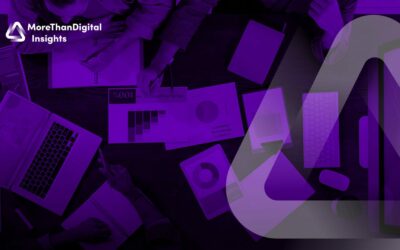Do you need to make better business decisions? Are you looking for a way to get more insights into your company’s performance? If so, you need to use business intelligence (BI). Business intelligence (BI) is often a company’s first step in data-driven decision-making processes. By collecting, analyzing, and reporting on data related to your business, BI can help you make more informed decisions about everything from marketing to product development. BI can help you understand your company’s performance at a glance and identify areas where you may need to make changes. With accurate and up-to-date data at your fingertips, you can make better decisions that will improve your business’s bottom line.
What Is Business Intelligence (BI)?
Business intelligence (BI) is a process of transforming raw data into meaningful and valuable information for decision-making purposes. BI involves collecting data from internal and external sources, analyzing it, and reporting on it to help business leaders make better decisions. BI aims to give businesses and managers a clear understanding of their performance so they can identify areas where they need to make changes. BI can also help companies understand their customers and the competition. By analyzing data from various sources, businesses can develop strategies that improve their bottom line. Many tools and techniques are used in BI, including data mining, forecasting, and market analysis. BI also uses various software applications, including enterprise resource planning (ERP) systems and data warehouses. Most businesses use some form of BI to make more informed decisions. Large corporations typically have a team dedicated to managing and interpreting the company’s data. However, even small businesses can benefit from using BI tools such as spreadsheets or online analytics tools.
History of Business Intelligence
It’s important to note that this very modern definition of Business Intelligence has had a strangled history as a buzzword. Traditional Business Intelligence, capital letters and all, initially emerged in the 1960s as a system of sharing information across organizations. Business Intelligence as the term was coined in 1989, alongside computer models for decision-making. These programs developed further, turning data into insights before becoming a specific offering from BI teams with IT-reliant service solutions. This article will serve as an introduction to BI and is the tip of the iceberg.
The Benefits of Business Intelligence (BI)
There are several benefits to using business intelligence (BI):
- Improved decision-making – With accurate and up-to-date data at your fingertips, you can make better decisions that will enhance your business’s bottom line;
- Understanding your customers – By analyzing data from various sources, businesses can develop strategies that improve their bottom line;
- Understanding the competition – By understanding what the competition is doing, you can stay ahead of the curve and maintain your competitive edge;
- Increased profits – BI can help you identify areas where you need to make changes to increase profits;
- Improved productivity – With BI tools such as dashboards and reports, you can quickly get a snapshot of your company’s performance;
- Improved efficiency – By identifying areas where your company is not productive, you can focus on making changes that will improve efficiency;
- Compliance with regulations – In some cases, businesses must comply with government regulations related to data collection and reporting;
- Better strategic planning – BI can help you develop long-term plans based on an analysis of past performance and future trends;
- Improved customer service – With better insights into customer behavior, you can provide a more targeted customer service experience;
- Reduced costs – Often, businesses can reduce costs by using BI tools to automate tasks or reduce the need for manual data entry.
Business Intelligence (BI) vs. Business Analytics (BA)
Most people think Business Intelligence (BI) and Business Analytics (BA) are the same things. However, there is a big difference between the two. BI is all about reporting on data that has already happened, while BA is focused on predicting future outcomes and trends. BI is mainly used to make strategic decisions, while BA can be used for strategic and operational decisions. Another big difference between BI and BA is that BI relies heavily on pre-packaged software to do its job, while BA requires more custom development and business-oriented data science. Read here the full article: Business Intelligence (BI) vs Business Analytics (BA) – Understanding the Difference
Challenges in Business Intelligence (BI)
Business Intelligence (BI) is a process of transforming raw data into meaningful and valuable information for decision-making; this is also why there can be many challenges, especially regarding data, understanding and “certainty” of data.
- Volume of data – With so much data coming in, it can be challenging to determine which information is essential and which isn’t.
- Variety of data – It can be difficult to compile it into a cohesive report with data from different sources.
- Timeliness of the data – As we all know, “time is money”. If you’re waiting for “updated data” to make a decision, you may be too late.
- Misconception about BI – Business Intelligence is more than just some number-crunching and complex algorithms. BI is more about understanding business problems and finding solutions using data.
- Uncertainty – The issue of uncertainty also arises when making decisions based on BI reports. Since the reports are only as good as the data they are based on; there is always a chance for inaccuracy.
- The “Black Box” – Maybe one of the biggest challenges with BI is the “black box” phenomenon. Because BI relies so heavily on software and automation, it can be challenging to understand how the software arrived at its conclusions or numbers.
Internal vs. External Data Sources
Business Intelligence (BI) can be either based on internal or external data sources. The main difference between the two is that internal data is collected from within the company, while external data is sourced from outside the company. The pros of using internal data are that it is more reliable and accurate, as it comes directly from the source and you can control the parameters under which the data was collected. Internal data is typically easier to access and can be processed more quickly. The main drawback of using internal data is that it may not represent the entire population. For example, if you’re looking at sales data, it may only include customers who have made purchases within a certain period. Any trends or patterns may not be accurate for the entire customer base. The pros of using external data are that it is more comprehensive and can provide a broader view of the market or industry. External data is also usually more up-to-date than internal data, as companies specialize in collecting, cleaning, and selling this data. The main drawback of using external data is that it can be difficult to collate and process or costly when the data source comes from a paid provider. Additionally, it may not be trustworthy or reliable, as it can be biased or inaccurate.
Business Intelligence (BI) Methods
There are a number of different Business Intelligence (BI) methods that can be used to help you make better decisions for your business. The most common BI methods are data mining, data warehousing, and business intelligence software.
- Data Mining – Data mining is extracting valuable information from large data sets. This information can be used to make strategic decisions about the future of the business.
- Data Warehousing – Data warehousing stores data in a central location to be accessed and processed quickly. This is often done to improve performance or efficiency.
- Business Intelligence Software – Business intelligence software is a tool that helps you analyze and understand data. This type of software is typically used to make better decisions about pricing, marketing, and product development and tracks important KPIs in the company.
- Reporting – Reporting is another BI method that involves creating reports based on data. These reports can be used to track progress, identify areas for improvement, and make decisions about the future of the business.
- Descriptive Analytics – Descriptive analytics is a method of BI that uses data to describe what has happened in the past.
- Predictive Analytics – Predictive analytics is a method of BI that uses data to predict what will happen in the future.
- Performance metrics and benchmarking – Performance metrics and benchmarking is a method of BI that uses data to compare the company’s performance to other companies in the industry.
- Statistical analysis – Statistical analysis is a method of BI that uses data to find relationships and trends.
- Data visualization – Data visualization is a method of BI that uses data to create visual representations, such as charts and graphs. These visualizations help managers to better understand data without reading lines of numbers and tables.
- Visual analysis – Visual analysis is a method of BI that uses data to understand relationships and trends. This helps users understand patterns more efficiently and make decisions based on visual data representation.
Types of Business Intelligence (BI) Tools
There are many different Business Intelligence (BI) tools that can be used to help you make better decisions for your business. Some might be very basic like Excel Spreadsheets up until very sophisticated systems like OLAP.
- Spreadsheets – The most basic form of BI is the spreadsheet. Spreadsheets are often used to track progress, identify areas for improvement, and make decisions about the future of the business.
- Dashboards – Dashboards are a type of BI tool that help you visualize data. Dashboards can be used to track progress, identify areas for improvement, and make decisions about the future of the business.
- Data Visualization Tools – Data visualization is a method of BI that uses data to create visual representations, such as charts and graphs. These visualizations help managers to better understand data without reading lines of numbers and tables.
- Reporting Software – Reporting software is a BI tool that helps you create reports based on data. These reports can be used to track progress, identify areas for improvement, and make decisions about the future of the business.
- Business Intelligence Software – Business intelligence software is a tool that helps you analyze and understand data. There is specialized software on the market focusing on specific topics like pricing, marketing, and product development.
- Data Mining Tools – Data mining extracts valuable information from large data sets. Typical data mining tools help classify, associate, and cluster data for easier information extraction.
- Statistical Analysis Software – Statistical analysis software is a type of BI tool that uses data to find relationships and trends. Statistical software usually has many different features and statistical analysis models built in and can be used for various purposes, such as quality control or market research.
- Predictive Analytics Software – Predictive analytics is a method of BI that uses data to predict what will happen. This is also usually with Business Analytics, where data-driven decisions can be based on scenarios and predictions.
- ETS (Extract-Transfer-Load) Tools – ETS tools extract data from one system, transfer it to another, and then load it into that system. This is often done in order to consolidate data from multiple sources into one central location.
- OLAP (Online Analytical Processing) – OLAP is a BI tool that helps you analyze data. OLAP tools typically have cube analysis and roll-up features that allow users understand data better. Businesses often use OLAP to make marketing, product development, and pricing decisions.
- Business Analytics Platforms & Providers – MoreThanDigital Insights is an example of a platform offering strategic insights and analytics without needing in-house data and analytics analysis. There are many providers on the market with spezialized solutions around product, prices, manufacturing or more holistic ones like Insights.
Depending on the business goals and the scenario, the tools might be different. Sometimes a simple Excel spreadsheet can be enough, while other data types might require more advanced tools. It is essential to understand what kind of data you are working with and what you need to accomplish to choose the right BI tool.
Conclusion
Business intelligence and analytics are crucial for any business. Depending on the company, different analyses, tools, and methods should be used to get the most accurate insights possible. Starting small with basic BI and analytics tools is an excellent way to grow more extensive and sophisticated systems over time. Let us help you find the right BI and analytics tools for your business so that you can make data-driven decisions that will improve your bottom line. Try MoreThanDigital Insights, a free business analytics tool to find strategic opportunities for optimization. Our platform offers deep insights without needing in-house data and analytics expertise. Sign up today and see the difference our platform can make for your business.






